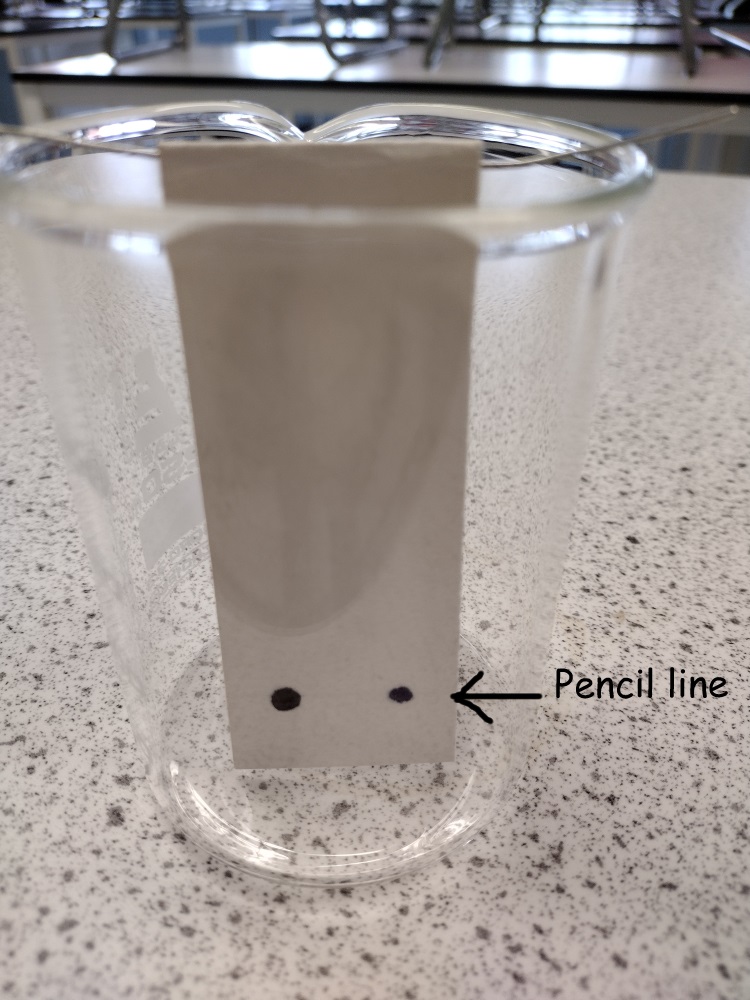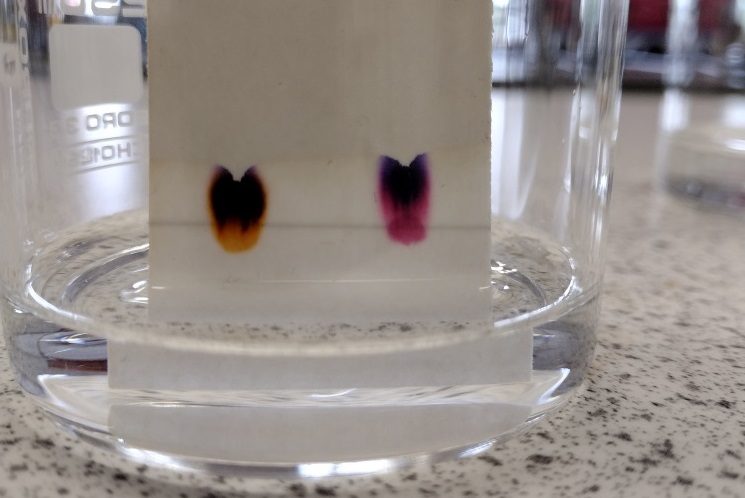Required Practical 12: Chromatography
About this practical...
Chromatography is fun and simple to do so you must focus on the process, the key terms involved and calculating the Rf value of a pigment in the food colouring that you are using. Identify the mobile phase, the stationary phase, the solvent, the solute, the solvent front as well as important steps such as why the base line is always drawn in pencil.

Method:
1. Collect your equipment: Beaker, wire, chromatography paper, pens provided.

2. Draw a pencil line across the paper approximately 1cm up

3. Draw spots of the ink onto the pencil line

4. Carefully add water so that it touches the paper but does not touch the in spots.

5. Wait for the water to rise towards the top of the paper then remove it from the water.

6. Carefully mark the height that the water reached (solvent front)

7. Work out the Rf value for a particular pigment that did not reach the solvent front.

Safety & Managing Risks
Usual lab rules must be followed: Bags and stools tucked away and notify the teacher of any spills or breakages immediately. For more detailed information, please consult CLEAPSS.

Technician notes:
250 ml beakers

Chromatography paper strips

Selection of water soluble ink pens

straight wire holder (straightened paper clip)

Narrow chromatography strip pre-inked with unknown pen (if requested by teacher)

This page was updated on: 8th January 2022
